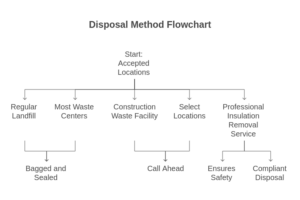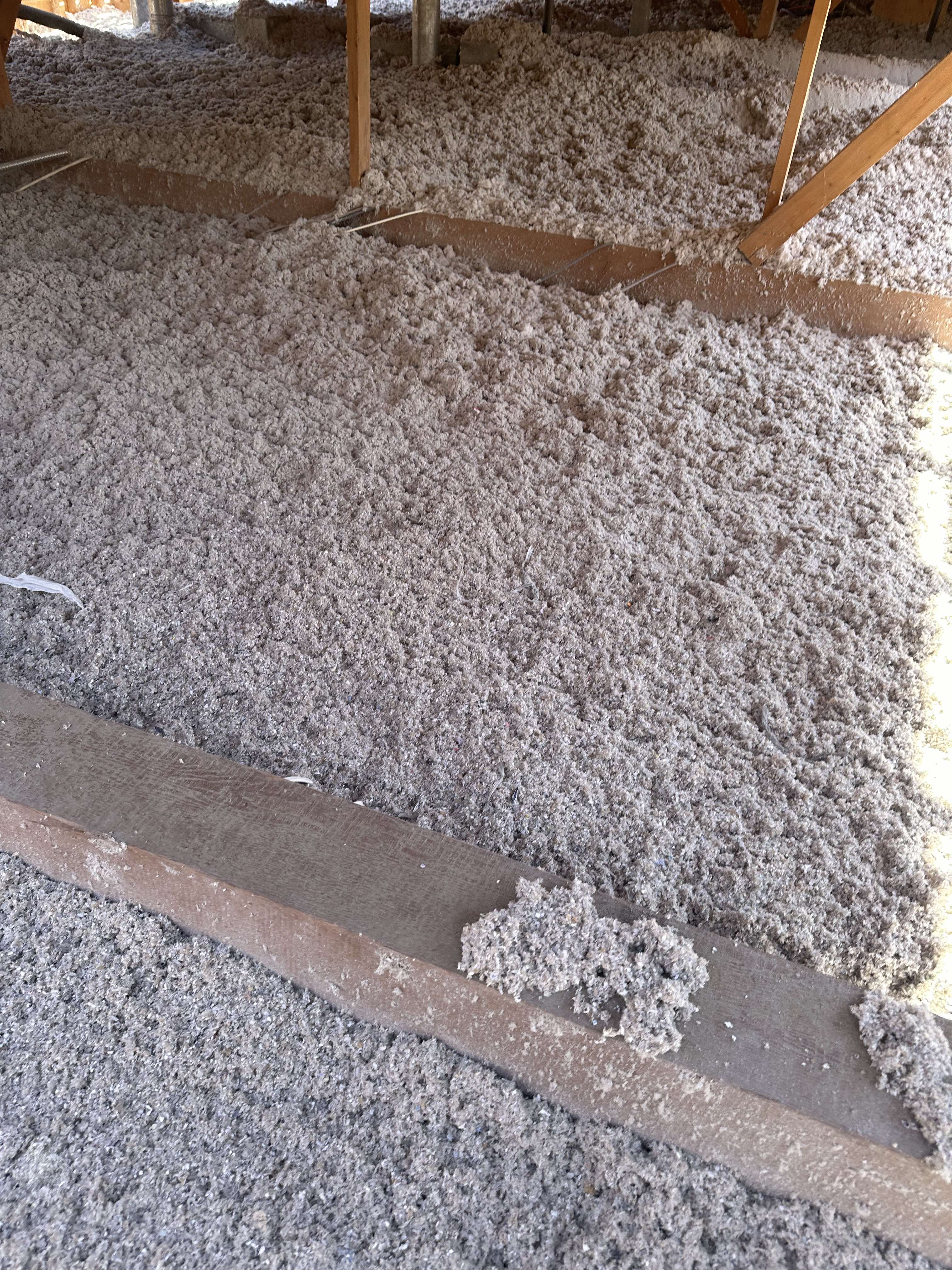Are you planning to remove fiberglass insulation from your property? With the right safeguards in place, skin rashes, breathing problems, and domestic pollution are highly avoidable. Failure to control the situation can have severe consequences, where the particles can be suspended in the air and can also cause serious health problems.
Did you know? Fiberglass consists of fine glass particles, which get distributed in the air and may be hazardous to skin, lungs, or even the eyes. According to the CDC, exposure to fiberglass dust leads to a wide range of respiratory challenges and overall prolonged discomfort (cdc.gov).
In this guide, we will explain every cleanup task and how to dispose of the fiberglass insulation, while also helping you adhere to the proper safety guidelines. So, read to the end!
Important Safety Equipment for Fiberglass Removal
Protect yourself from fiberglass exposure prior to commencing the task of fiberglass removal by equipping the relevant protective gear:
- Full-length tops and bottoms – Cover exposed skin.
- Slash-resistant gloves – Protect hands from splinters.
- N95 respirator or dust mask – Protect from breathing in fiberglass fragments.
- Safety goggles – Protect eyes from floating fibers.
- Disposable coveralls – Offers protection to the whole body.
- Tape (cuffs and collar) – Eliminate gaps in the clothing to stop the entry of fiberglass.
Preparing the Workspace
In your home, proper preparation avoids cross-contamination in other areas. Here are important tips to remove fiberglass insulation safely:
- Switch off HVAC Units – Stop the spread of fiberglass fibers through the vents.
- Contain the Work Area – Use plastic sheets to cover windows, doors, and vents.
- Take out Sofas, Household Items, and Valuables – Protect your belongings from fiberglass exposure.
- Protecting Against Floor Contamination – Drop cloths simplify cleanup while preventing floor contamination.
- Have a Spray Bottle Filled with Water – Reduces the amount of particles in the air by lightly misting insulation prior to handling.
Step-by-Step Guide: Effective Insulation Extraction Techniques
If you are thinking about how to get fiberglass off, here are a few essential tips that can help:
1. Identifying the Correct Insulation
Two common types are available:
- Batt and Roll Insulation – Usually placed inside walls or attics and kept in position through stapling.
- Blown-in Insulation – A Loose type of insulation that specialised techniques can easily remove.
2. Steps Involved with Batt and Roll Insulation Removal
- Unsnap or unfasten the insulation from the frames.
- Start frosting the insulation blanket while keeping it as small as possible.
- Remove the material to the light, durable carry bags and seal properly.
- Continue till every insulation is extracted.
3. Extracting Blown in Insulation
- Employ the use of an industrial-grade insulation vacuum with a HEPA filter.
- Start from any corner to easily work through the area systematically.
- Gather the insulation within disposable bags and seal them tightly.
- In case a vacuum is not available, place the insulation into heavy-duty bags using a shovel.
4. Activity Area Cleansing
- Employ a HEPA filter vacuum for extracting any remaining shavings and fibers.
- Wipe every surface using a damp microfiber cloth.
- Lightly spray water on the exposed surface to minimize suspending risks.
- Ensure all cleaning disposable materials are disposed of appropriately.
How to Properly Get Rid of Fiberglass Insulation
If you are thinking about how to dispose of fiberglass insulation, here is the sure-shot solution:
1. Consult With Authorities
Certain locations have particular criteria regarding the fiberglass insulation disposal. Be sure to give your local waste and rubbish management authority a call to get the details you need.
2. Bind All Insulation
Fill heavy-duty contractor bags halfway with the insulation and seal them tightly so that no fibers can escape.
3. Take to Designated Places
Some landfills accept fiberglass, though some do have special guidelines. Be aware of the facilities you go to.
4. Do Not Set Fire or Recycle
Because fiberglass does not decompose, it should not be burned or set on fire under any conditions. Limitations stretch across other forms of recycling, as it can only be done in certain areas.

How to Remove Fiberglass from Skin and Clothing
Even taking precautionary measures, fiberglass can still come in contact with different parts of the body. Here are some methods on how to remove it;
If Fiberglass Gets in Contact with Your Skin:
- Do not scratch – Scratching will only make things worse. It can push more fibers deeper than they already are in your skin.
- Wash with warm water and soap – Your first line of defense is using a gentle soap and rinsing it off thoroughly.
- Use tape – If you are considering how to remove silvers, an efficient method to remove it is pressing duct tape over the affected regions. You must do this with caution, though.
- Apply moisturiser – Regardless of the injury, apply some sort of moisturiser that will calm the irritated skin.
If Fiberglass is in Your Eyes:
- Immediately rinse with clean water for 15 minutes.
- Don’t rub your eyes.
- If still irritated, get medical help.
If Fiberglass Particles Are Inhaled:
- Move to fresh air.
- Drink water to help soothe the throat.
- If still irritated or if you have trouble breathing, you should seek medical advice.
Prevent Future Fiberglass Problems
- Conduct Regular Insulation Inspections – This will help you catch problems more quickly.
- Replace Old or Damaged Insulation – This can help reduce unnecessary exposure.
- Consider Other Insulation Products – Other alternatives to fiberglass, such as spray foam or cellulose, may help lower health risks.
Remove Insulation Safely with Professionals
My Insulation Guy and other specialists will take care of the fiberglass insulation with proper care regarding its removal and disposal. Though the proper procedure to remove fiberglass insulation is possible through do-it-yourself techniques, we recommend alternating processes due to safety measures. Experts like us practice best practices and specialised equipment, and compliance with local regulations is also guaranteed. For more details, you can visit our website or contact us.
FAQs
- Can I personally remove fiberglass insulation by myself?
Yes, however, you must take the strictest of safety measures and wear protective clothing to avoid exposure.
- What is the safest way to dispose of fiberglass insulation?
Put it in heavy-duty plastic bags, seal it, and then throw it in a construction waste site or landfill.
- How to remove fiberglass slivers from my skin?
You can remove them using duct tape and then wash the sore with soap and warm water.
- Is fiberglass insulation hazardous?
While fiberglass is not considered hazardous, if mishandled, it may irritate skin, eyes, and lungs.
- If I have fiberglass insulation, should I consider using other materials?
If you are sensitive to allergens, then alternatives like spray foam or cellulose would be the best.

